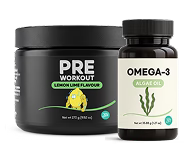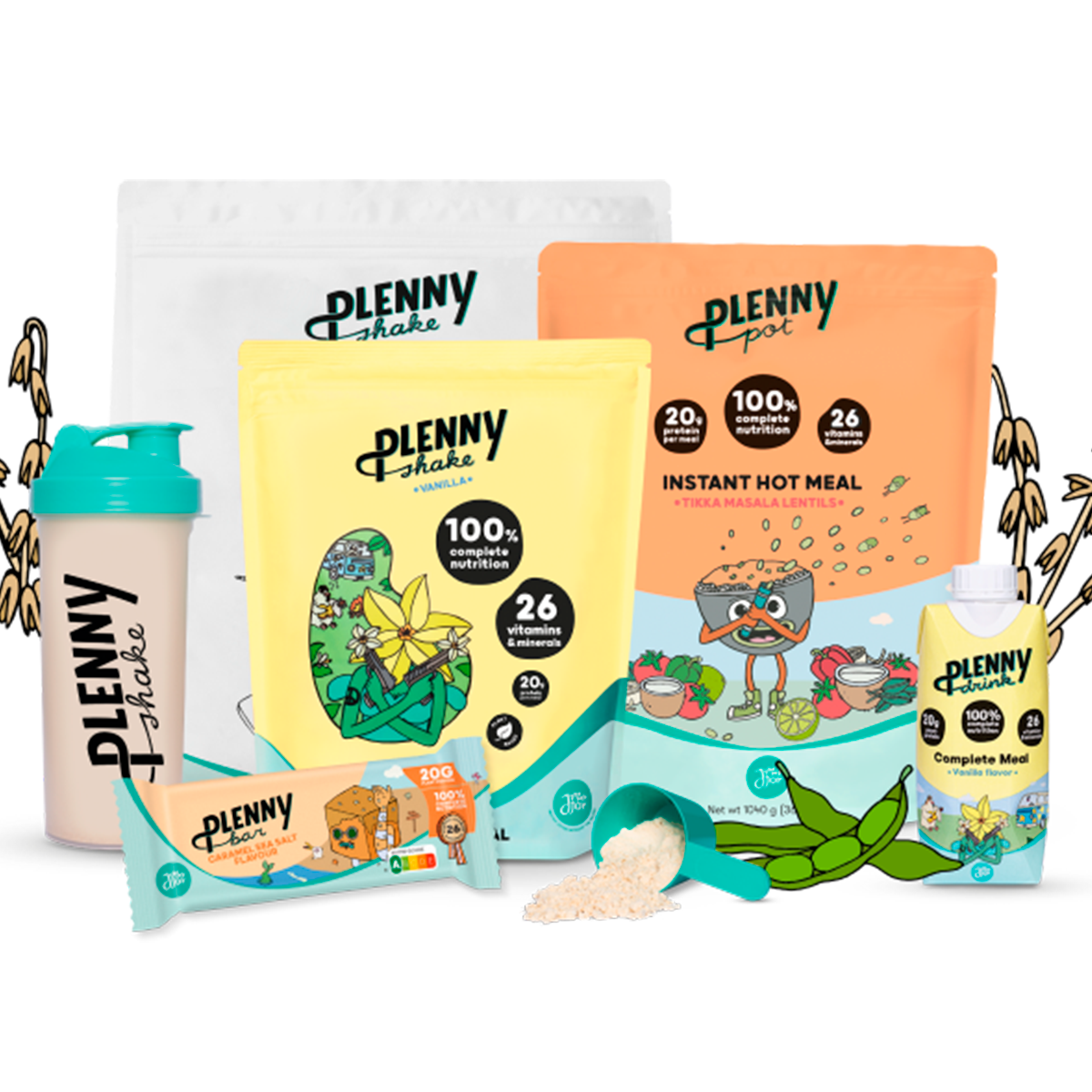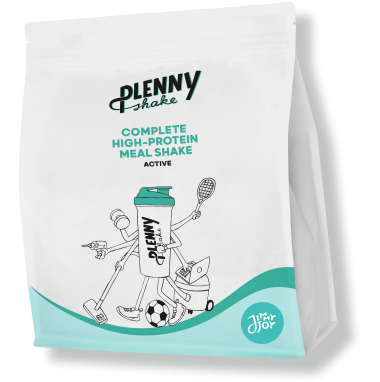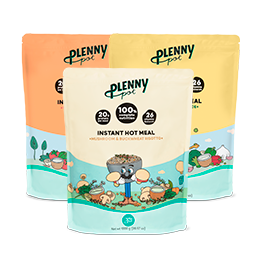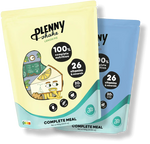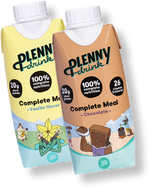The image of milk has changed radically in recent decades. In a conservative food culture, milk was synonymous with everything healthy (did your parents also make you drink at least a glass of milk a day?). Today, More and more people are giving up milk, one in two friends talks about lactose intolerance and supermarkets are full of lactose-free and lactose-low products.
But what exactly is lactose? Should we rightly fear it? How is lactose intolerance identified? And what should you do with all this information? In this article, we'll address these and many more burning questions about lactose that you may have.
What is lactose?
Simply put, lactose is the main sugar in milk.
Babies are known for crying a lot, but apart from that, they also produce a lot of lactase. Lactase is an enzyme from the small intestine that allows babies to absorb breast milk. It breaks down lactose into these two monosaccharides: glucose and galactose. And after that, these two simple sugars are easily absorbed into the bloodstream and give babies the energy to explore the world around them [1, 3].

As one ages, the body's ability to produce the necessary amount of the enzyme lactase is lost. As a result, lactose is not digested and becomes food for bacteria in the digestive tract. In the process of assimilating this disaccharide, the body experiences rather unpleasant sensations such as bloating, stomach cramps, and diarrhea. ☹️ And even if the enzyme lactase is produced in the body of an adult, its activity usually decreases with age. The older you are, the worse milk is absorbed [2].
How many people are lactose intolerant?
According to various expert estimates, about 65-70 percent* of the world's adult population is unable to properly break down lactose; this phenomenon is called lactose intolerance [4-6].
But wait, then there's a big chance I'm lactose intolerant too.
* Studies show that this is around 10-15% on average for European countries, but up to 90% for African and Asian countries.
How do I know if I am lactose intolerant?
Symptoms of lactose intolerance are usually quite pronounced and appear several hours after eating foods containing lactose. 
The five most common signs and symptoms are:
- Stomach pain and abdominal bloating;
- Diarrhea;
- Increased gas;
- Nausea;
- Stomach "grumbling" [7].
If some (or all) of these symptoms sound familiar to you, don't hesitate to visit your doctor and get an accurate diagnosis [8].
Lactose intolerance is not the same as dairy allergy.
It's very easy to get confused here, but the truth is simple: lactose intolerance is not an allergy to dairy products. These are two completely different concepts.
|
Lactose intolerance |
Dairy allergy |
| The inability to digest milk sugar. |
Reaction to casein (milk protein) |
|
It does not involve the immune system |
Involves the immune system |
|
The symptoms are only gastrointestinal. There are no respiratory or skin symptoms. |
It may involve cutaneous, respiratory or gastrointestinal symptoms. |
|
Most people with lactose intolerance can still consume a small amount of lactose without experiencing any problems. |
A small amount of milk protein can cause an allergic reaction. |
[9-11]
Is there a cure for lactose intolerance?
Sorry, there is no cure for lactose intolerance. However, if the symptoms are ruining your life and your mood, you can always help yourself by limiting or avoiding foods that contain lactose.
It is important to make sure you are consuming enough nutrients commonly found in dairy products, such as calcium and vitamin D [12].
Calcium
Calcium is great. If you want strong bones and muscles, healthy blood vessels and nervous system, satisfy your inner beast with calcium [15].
The required amount of calcium for adults is about 700 milligrams per day [16].
|
Meal |
Average serving size |
Estimated calcium * |
|
Canned sardines) |
50g |
200 mg |
|
Tofu, steamed or fried (hardened with calcium) |
120g |
200 mg |
|
Plenny Shakes v3.0 / Plenny Bars v2.0 / Plenny Drinks v2.0 |
1 meal |
185 mg |
|
Dried figs |
2 pieces |
100 mg |
|
Tahini (sesame paste) |
1 heaping teaspoon |
100 mg |
|
Pink salmon (canned) |
105g |
100 mg |
|
Baked Beans |
200g |
85 mg |
|
Broccoli (steamed) |
110g |
50 mg |
|
Canned tomatoes |
400g |
50 mg |
|
Whole almonds |
10 pieces |
50 mg |
|
Orange |
1 large fruit |
50 mg |
[16-19]
* The calcium content listed for most foods is an estimate and may vary due to multiple factors. Check the food label to determine how much calcium is in a particular product.
Vitamin D
Vitamin D also does a very important job, helping the body absorb calcium. Therefore, make sure to add foods rich in vitamin D to your diet, such as:
- Oily fish;
- Fungus;
- Soy, almond and oat milk;
- Ready-to-eat cereal;
- Being in the sun also helps, but we don't sunbathe without SPF sunscreen, right? [13, 14]
At Jimmy Joy, we use the most bioavailable forms of trace minerals. For example, we add vitamin D in the form of cholecalciferol (D3) so your body can absorb it easily and quickly [17].

One serving of Plenny Shake contains a daily requirement of vitamin D, 5.0 mcg [17].

Lactose-free and low-lactose dairy products
Lactose-free dairy products are currently the fastest growing market in the dairy industry. You've probably noticed that the number and variety of dairy products labeled "lactose-free" and "low-lactose" on supermarket shelves has increased tremendously. Milk, yogurt, and even cheese labeled "lactose-free" are options for those who don't want to give up dairy products just yet [20].
In fact, they are no different from standard dairy products and are an excellent source of calcium and vitamin D. The difference is that lactase is added to these products, which helps to digest lactose, so the products do not cause any symptoms [20, 21].
Jimmy Joy can also be boldly classified in the lactose-free category. Our mission is to make healthier meals scientifically possible. That is why, for all our products, we choose plant-based proteins instead of whey. For those who are wondering how plant protein differs from whey protein and what its benefits are, we are happy to recommend one of our previous articles; Plant protein vs. whey protein.
Conclusion
Lactose can be an excellent fuel that energizes the body. But unfortunately, most adults are unable to use its power due to intolerance.
If you decide to skip or limit your dairy intake, make sure you're getting enough nutrients to stay healthy and beautiful. And remember, we're always here to help!
Sources
- Forsgård RA (2019). Lactose digestion in humans: intestinal lactase appears to be constitutive whereas the colonic microbiome is adaptive.
- J. Fernando del Rosario (2015). Lactose Intolerance.
- Causes and diagnosis of lactose intolerance.
- Definition & Facts for Lactose Intolerance (2018).
- The American Journal of Clinical Nutrition (2019). Lactose digestion in humans: intestinal lactase appears to be constitutive whereas the colonic microbiome is adaptive.
- The United States National Library of Medicine (2020). Lactose intolerance.
- National Institute of Diabetes and Digestive and Kidney Diseases (2018). What are the symptoms of lactose intolerance?
- National Institute of Diabetes and Digestive and Kidney Diseases (2018). Diagnosis of Lactose Intolerance.
- CBHS Health Fund (2020). Understanding lactose intolerance and dairy allergies.
- James TC Li, MD, Ph.D (2019). Food allergy vs. food intolerance: What's the difference?
- The Thunder Bay District Health Unit (2017). Milk Allergy vs. Lactose Intolerance: Know the Difference.
- HealthLink BC (2019). Lactose Intolerance.
- National Institute of Diabetes and Digestive and Kidney Diseases (2018). How should I change my diet if I have lactose intolerance?
- National Institutes of Health (2020). Vitamin D.
- National Institutes of Health (2019). Calcium.
- The National Osteoporosis Society (2018). The best calcium-rich foods.
- Introduction to Plenny Shake v3.0.
- Introduction to Jimmy Joy Plenny Drink v2.0.
- Introduction to Jimmy Joy Plenny Bar v2.0.
- United Kingdom National Health Service (2019). Lactose intolerance.
- US National Library of Medicine National Institutes of Health (2019). Lactose-Free Dairy Products: Market Developments, Production, Nutrition and Health Benefits.

